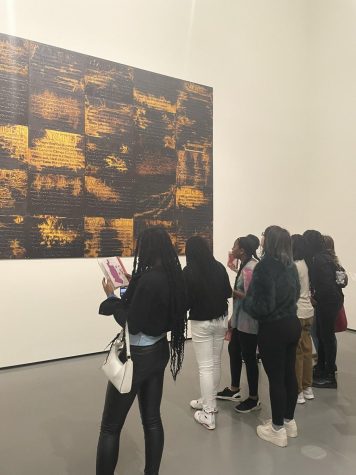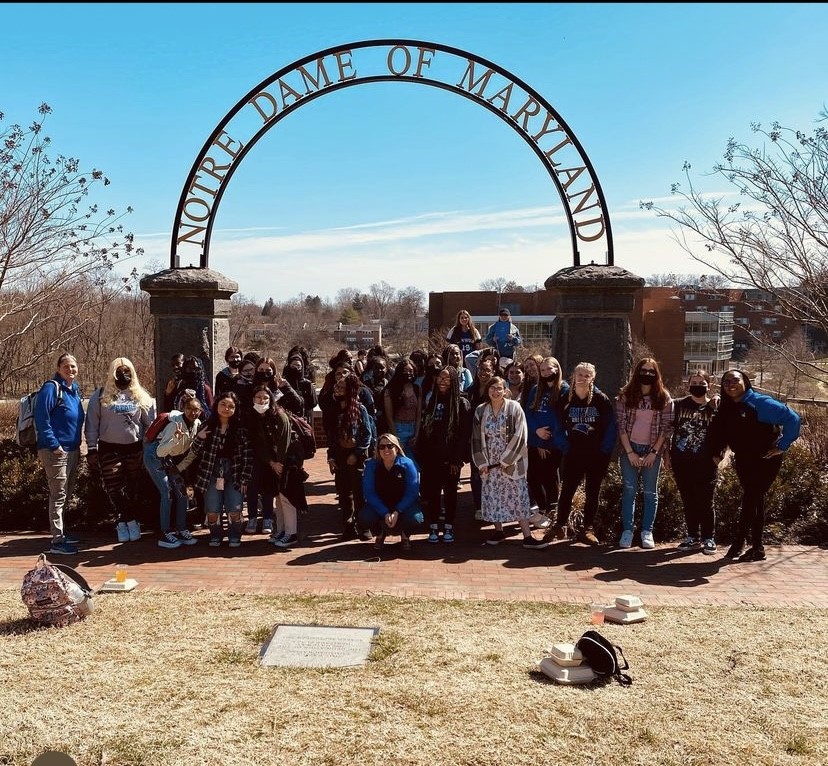The Return of Field Trips Provide Students Opportunity for More Hands On Learning Experiences
February 1, 2023
In 4th and 6th grade, I took a trip to Baltimore’s National Aquarium. Though I don’t remember much from the first trip, when I think back to the one I took in 6th grade, I remember being able to learn about tons of marine animals and being able to touch some as well. Both trips though, I recall I loved spending the day with my friends and some of my favorite teachers. Even now, they are still the best field trips I’ve been on (and the reason I contemplate being a marine biologist). Simply getting out and getting to experience what I had left me exhilarated,
For almost two years, students lost the experience of field trips as we waited for schools and places we’d visit to reopen from the pandemic. After consecutive months of being in the school building, students can get bored and lose their motivation for learning.
While breaks from school are a way to resolve this issue, field trips are beneficial educational breaks from the norm of the school day. Field trips are a great way to take a break from being in the building while still learning skills that are applicable to the classroom and real life. Many times field trips provide real life exposure to the things we’re learning in the classroom.
This is the first full year since the 2018-2019 school year that students can once again have the opportunity for various field trips from our many programs. There are many things taken into consideration as coordinators plan for experiences for their students.
First, is the consideration of how interesting and engaging it’d be for students. While field trips do tend to be educational, they should still be an enjoyable experience. Then, the trip has to be arranged with whoever is in charge of the location. Sometimes it takes multiple attempts to set up a trip, as there are faculty (like Ms. Beaty) that have to approve of them first. In addition, cost, buses, weather, and such are also taken into consideration to plan a field trip.
Planning these trips can take anywhere from weeks to months but Kenwood coordinators agree that it’s worth it. IB coordinator, Ms. Williams continues to organize trips because, “It is important for students to see different places outside of their normal routine so that they are exposed to different ideas and activities.” For her, it is rewarding to see students outside of the classroom setting.
Earlier in the year with IB Art teacher, Ms. Gavin, students visited the Baltimore Museum of Art. IB students have also gone on campus college visits and sat in on college courses to learn more about their options after high school.

SSA coordinator, Ms. Jones, who organizes multiple trips for her SSA students, has noticed that field trips, “allow students to bridge the gap between what they learn in the classroom and what’s in their community”. When field trips returned last Spring, AVID and SSA had the opportunity to learn about the college admission process and what Notre Dame of Maryland has to offer students.
Students have also had the opportunity to leave the building to learn more about history and how the government works with multiple social studies field trips that included visiting the Holocaust Museum and the Maryland General Assembly.

Students in CTE programs like our carpentry program also leave the building for field trips to explore more about what it’s like to work in their field outside the classroom. Carpentry students went to Modu Tech and Stark Truss in Brooklyn, MD. Carpentry teacher Mr. Sin shares, “Students learned not only about day-to-day operations of the companies, but also discussed employability skills as well as learned about the materials used and how global situations effect the economic part of construction, i.e. material and supply cost.”
Normally, on a field trip day, students would miss their second and third periods (sometimes slightly more). Though trips are important, missing even a day of school can put you behind, and this often is a big concern. IB student Cassandra O. says, “It’s not hard to catch up on work. You just have to go to class; teachers are understanding of this.” Another student agreed that “it’s fairly easy” and she is usually only left with a small amount of homework. So, as long as you hold yourself accountable (and your teacher is understanding), going on field trips shouldn’t be harming your grades.
Both students and staff can agree that there are many benefits to going on field trips. Students are able to take a break from school while still learning and even the adults on these trips are able to take a break as well. Over the past two years, with the circumstances, it has been difficult to plan safe trips. Now that schools are somewhat returning to normalcy, it might be good to consider organizing more trips (if possible). Field trips can open students to new ideas, possibilities, and give them opportunities they wouldn’t have access to in school. It’s a great opportunity for students and teachers to bond outside the classroom and share an experience.
